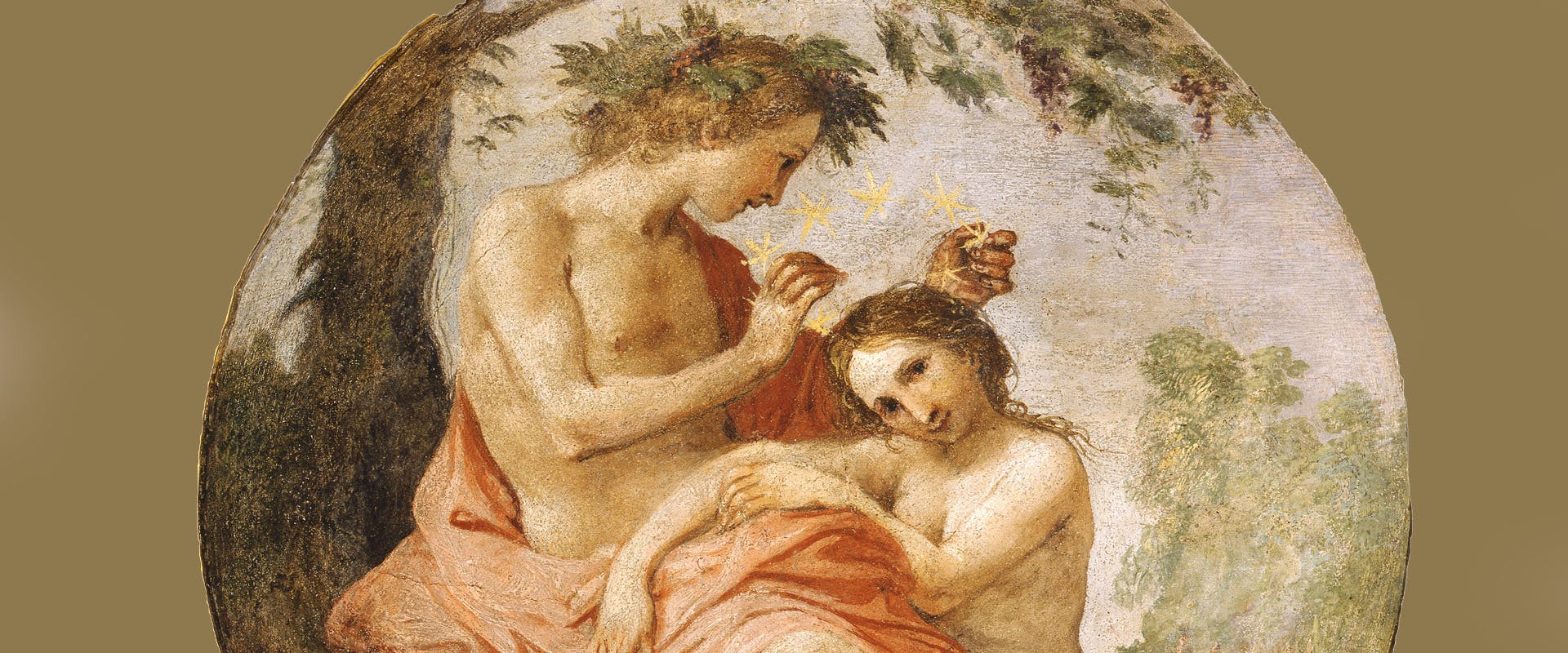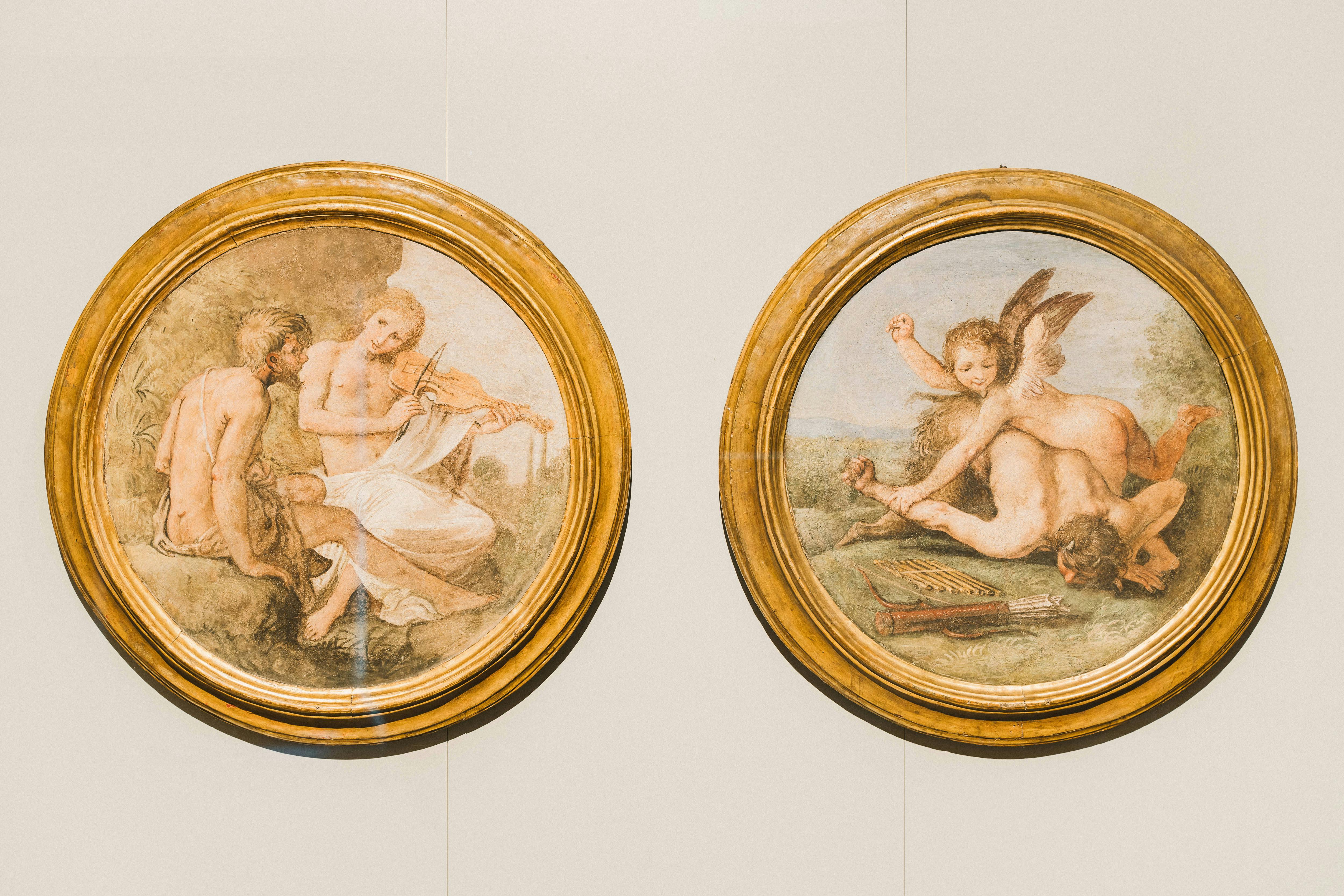A bizarre and whimsical temperament. Giovanni da San Giovanni, a maverick painter at the Medici court
Giovanni da San Giovanni returns to his home town with an exhibition in the "Lands of the Uffizi" series
Giovanni da San Giovanni is coming home to the Valdarno: the enduring bond between the artist and his homeland, so strong that he is even named after his native city, is to be celebrated in a new exhibition in the Lands of the Uffizi series entitled "A bizarre and whimsical temperament’ Giovanni da San Giovanni, a maverick painter at the Medici court". The exhibition takes the shape of a journey exploring the art of this neo-Mannerist painter in ten tondos painted on terracotta tile, the artist’s ‘signature material’. Running from 8 October 2023 to 31 March 2024 it is hosted both in the Museo delle Terre Nuove and in the Museo della Basilica di Santa Maria delle Grazie. It is promoted, as part of their exhibition programme, by the Fondazione CR Firenze and the Gallerie degli Uffizi in the context of their respective Piccoli Grandi Musei and Uffizi Diffusi schemes.
One of the Medici family’s favourite painters, Giovanni Mannozzi (1592 – 1636), better known as Giovanni da San Giovanni, stands out from the sombre virtuosity of his own century’s movement, Mannerism, thanks to the airy lightness of his brushwork and his soft, fresh palette. His neo-Hellenistic taste and irreverent sense of humour, together with his skill in working “fast and well”, can be appreciated in the tondos on display in the exhibition in a vibrant flow of delicate, luminous forms that will turn the visitor’s enjoyment of his paintings into a positively ethereal experience.
The unique technique of painting in fresco on terracotta tile, which accounted for the artist’s popularity and which is the leitmotif of the exhibition, points up the light quality of Giovanni da San Giovanni’s work thanks to the material’s filmy texture and to the sculptural nature of the circular format that smoothes and softens the entire painted scene.
The artist’s subjects of choice come from mythology and he handles them with a witty verve as, for example, in the case of the tondo depicting Aurora and Tithonus in which the youthful, carefree goddess looks on almost in amusement at the decline of her ageing husband, weary and worn out by the onset of old age. But Giovanni’s feeling for the refinement of mythology goes hand in hand with a typically Tuscan taste for brazen provocation, to which he gives free rein in his fresco of the Emasculation scene, in which a group of women is busy getting its own back on a Satyr.
His fresco painting earned him the admiration of prestigious patrons in both Florence and Rome, thus enabling him to cultivate a close tie with the Grand Dukes. It was for the Medici family that Giovanni painted one of his first works in Florence, a now lost fresco in Piazza della Calza, and his last work, the decoration of the Sala degli Argenti in the Pitti Palace, which his premature death prevented him from completing.
The exhibition, built around the relationship between the artist and a member of the Medici family, Grand Duke Ferdinand I’s son Prince Don Lorenzo, will be displaying for the first time the full set of eight tondos that Giovanni da San Giovanni painted for the Villa di Petraia c. 1634, along with two further tondos that he painted for the Villa di Pratolino and other works connected with these commissions.
The other aspect on which the exhibition focuses is the painter’s natural link with the town of San Giovanni Valdarno and the works by Giovanni and other artists close to him that are still housed here: first and foremost, the paintings in the Museo della Basilica di Santa Maria delle Grazie. This museum’s collection includes one of the artist’s few canvases, commissioned by the members of the Compagnia di San Giovanni Decollato for their altar in the church of San Lorenzo. Depicting the Beheading of St. John the Baptist, it is signed and dated 1620. The same period in his career is conjured up by two lunettes frescoed in 1621 at the top of the two staircases in the Oratory of Santa Maria delle Grazie with scenes of the Annunciation and the Marriage of the Virgin. Today the museum hosts the original version of the Marriage of the Virgin, which was discovered during restoration by the Soprintendenza in 1953. Though chipped by the artist himself, it is still legible in part. These works, which tell us that Giovanni was back in his the city of his birth between 1620 and 1621, testify to his major role in the complex restructuring and embellishment of the Oratory that got under way in the 17th century. In this section of the exhibition, curated by Michela Martini, the Beheading of St. John the Baptist will be juxtaposed with another of Mannozzi’s canvases depicting the Circumcision from San Bartolomeo in Cutigliano, a work also dated 1620 though not widely known to the general public. Visitors will also be able to admire a masterly work from a private collection entitled The Paupers’ Kitchen and the coat-of-arms of the Mannozzi family, while his skill as a fresco painter is further borne out by an exquisite small work from Mina Gregori’s private collection depicting St. Lucy. Giovanni was to return to his home town again in the 1630s, painting St. Joseph with the Baby Jesus which is still part of the museum’s collection today.
Stanislao Pointeau. A Tuscan "macchiaiolo"of French descent. An exhibition dedicated to Prof. Carlo Del Bravo
Exhibitions
The Medici: Mugello Folk. Family portraits from the Gallerie degli Uffizi
From 19 May to 5 November, four works from the Uffizi Galleries bring back the Grand Dukes in the country and towns of the Mugello, the family’s legendary homeland.
Exhibitions
A bizarre and whimsical temperament. Giovanni da San Giovanni, a maverick painter at the Medici court
Giovanni da San Giovanni returns to his home town with an exhibition in the "Lands of the Uffizi" series
Exhibitions
The Ceramics of Montelupo and the Uffizi. A gallery of comparisons
"Lands of the Uffizi" comes to Montelupo for the first time
Exhibitions
Embattled thinkers. Fame and oblivion of two men of letters, from the Battle of Anghiari to the siege of Famagusta
The Museo della Battaglia e di Anghiari is to host a new exhibition in the Lands of the Uffizi
Exhibitions
The Fabulous '60s in the Maremma. The mark of Ico Parisi
The splendour of the fashionable clothes of the Museum of Fashion and Costume of Pitti Palace 'parades' in Grosseto to recreate the dynamism and effervescence of the society of Southern Tuscany in the post-War period.
Exhibitions
The paintings of Jacopo Vignali, from the Gallerie degli Uffizi to San Casciano
In memory of Carlo Del Bravo
Exhibitions
Masaccio and Fra Angelico. A dialogue on truth in painting
Masaccio returns to his birthplace, Castel San Giovanni, in a dialogue with Fra Angelico
Exhibitions
La predella degli Uffizi salvata al Castello di Montegufoni
The return to Montespertoli of the Gallerie degli Uffizi predella
Exhibitions
A Renaissance Masterpiece, from France to Bosco ai Frati: A Triptych by Nicolas Froment.
15th century painter Nicolas Froment’s masterpiece returns after almost 200 years to the convent that was its home for centuries
Exhibitions
Nel segno della vita. Donne e Madonne al tempo dell' attesa
An exhibition devoted to the portrayal of the motherhood
Exhibitions
Masaccio and Renaissance masters compared to celebrate 600 years of the Triptych of San Giovenale
Masaccio’s San Giovenale Triptych displayed for the very first time alongside work by the great painters of his day
Exhibitions
Pietro Benvenuti in the Age of Canova. Paintings and drawings from public and private collections
The first “Lands of the Uffizi” exhibition to be held in Arezzo explores the work of painter Pietro Benvenuti in the age of Canova
Exhibitions
The Warrior Pope Giuliano Della Rovere and Anghiari’s Soldiers of Fortune
The link between the Warrior Pope Giuliano Della Rovere and Anghiari’s Soldiers of Fortune
Exhibitions
Giottesque Painters in the Valdelsa
Two versions of the Madonna and Child juxtaposed for visitors to discover Lippo di Benivieni and the followers of Giotto in the Valdelsa
Exhibitions
"The Final Seal". The Stigmata of St. Francis at La Verna from the collections of the Gallerie degli Uffizi
The Pinacoteca Comunale di Castiglion Fiorentino and the Gallerie degli Uffizi trade two masterpieces
Exhibitions
The Civilisation of Arms and the Courts of the Renaissance
An exhibition in Anghiari telling the story of the Renaissance courts and of the men who peopled them, amid war and culture.
Exhibitions
In the Name of Dante. The Casentino in the Divine Comedy
Dante returns to the castle of Poppi, where the Casentino inspired the Divine Comedy
Exhibitions
Dante and Andrea del Castagno Return to San Godenzo
The fresco of Dante painted by Andrea del Castagno in the place where the painter was born and where the poet's exile began
Exhibitions

